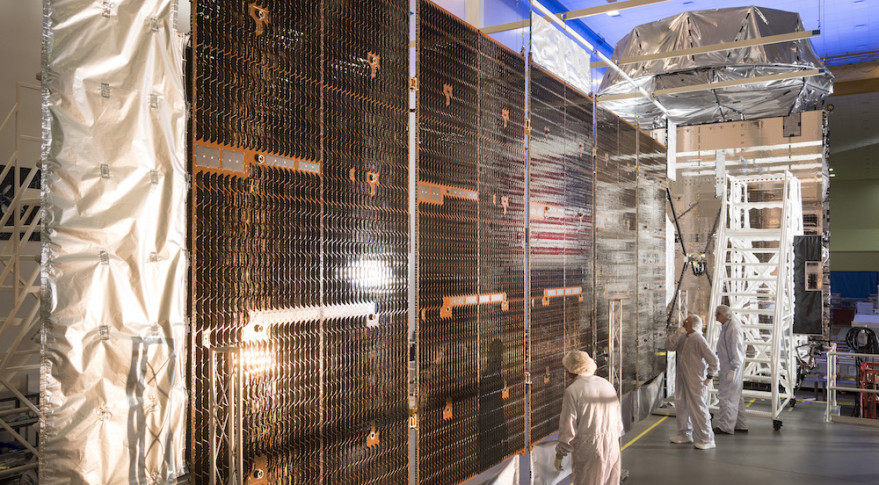The US Navy's Newest Satellite Suffers Glitch Following Launch

WASHINGTON – The U.S. Navy's newest communications satellite has experienced an undisclosed "anomaly" following its June 24 launch, causing the Navy to suspend the transfer of the satellite to geosynchronous orbit.
In a July 8 statement, the Navy said the fifth satellite in its next-generation narrowband communications constellation, known as the Mobile User Objective System, had expected to reach geosynchronous orbit and a test location about 35,400 kilometers above Hawaii by July 3. But following a successful launch, "the satellite experienced an anomaly that required the transfer maneuver to be temporarily halted," Steven Davis, a spokesman for the Space and Naval Warfare Systems Command, said. He did not elaborate.
Since the event, the Navy "has reconfigured the satellite from orbital transfer into a stabilized, safe intermediate orbit to allow the MUOS team to evaluate the situation and determine options for proceeding," he said.
MUOS-5 is an on-orbit spare for a system that provides smartphone-like communications to mobile forces at rates 10 times faster than the Navy’s legacy satellites, the Ultra-High Frequency Follow-on system. Davis said the four primary MUOS satellites, which are expected to provide service beyond 2025, are performing as expected on-orbit.
United Launch Alliance lifted MUOS-5 June 24 from Cape Canaveral Air Force Station in Florida aboard an Atlas 5 rocket in its most powerful configuration, featuring a 5-meter payload fairing, five solid-fueled strap-on boosters and a Centaur upper stage powered by a single RL-10 engine.
In a June 24 press release, the Navy said the satellite was responding to commands from a team at the Naval Satellite Operations Center in Point Mugu, California and that the satellite was in transit toward its location in geosynchronous orbit, where it would deploy its solar arrays and antennas and begin months of on-orbit testing.
Lockheed Martin is the prime contractor on the MUOS program.
Get the Space.com Newsletter
Breaking space news, the latest updates on rocket launches, skywatching events and more!
"Nothing is more important to Lockheed Martin than mission success," said Chip Eschenfelder, a Lockheed Martin spokesman. "We are working closely with our Navy customer to determine the cause of the anomaly."
The Government Accountability Office has said the MUOS program carries a price tag of about $7.7 billion.
This story was provided by SpaceNews, dedicated to covering all aspects of the space industry.
Join our Space Forums to keep talking space on the latest missions, night sky and more! And if you have a news tip, correction or comment, let us know at: community@space.com.
Mike Gruss is a veteran defense reporter and Editor-in-Chief of Sightline Media Group, which includes Army Times, Air Force Times, Dense News, Military Times and Navy Times. From 2013 to 2016, Mike served as a Senior Staff Writer for SpaceNews covering national security space programs and military space policy in the U.S. Congress. Mike earned a bachelor's degree in English and American Studies from Miami University and has previously wrote for the Journal Gazette in Fort Wayne, Indiana and the Virginian-Pilot in Virginia before joining SpaceNews. Prior to joining Sightline in 2017, he was a senior editor of FedTech magazine covering technology in federal government. You can see Mike's latest project on Twitter.











